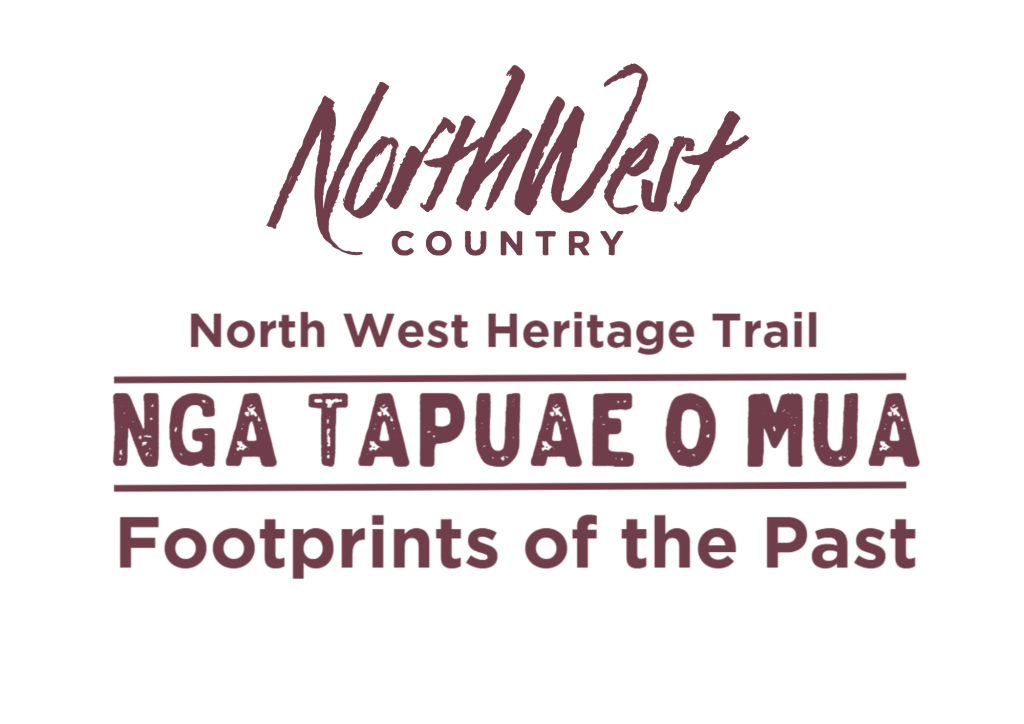
Ko Ngā Pākehā
Tinitini ngā kāinga me ngā pā puta noa i te rohe i mua i te taenga mai o te Pākehā. I te taenga mai a John McLeod me te tokomaha tāngata whai, i tangohia e rātou ngā rawa, ngā whenua, ngā rakau me te ingoa hoki o tēnei wāhi, ko Te Awaroa tēnā.
Europeans
Te Awaroa was an area of Maori settlement before an entrepreneur, John McLeod, saw an opportunity in the waterways and the kauri timber. Europeans managed to take the land, the trees, and even the name of the district, Te Awaroa. McLeod renamed it Helensville after his wife Helen. They moved away a few short years later. John’s brother Isaac and his wife Janet stayed and made it their home. Their descendants live here still.
The Arrival of the Europeans – Te Taenga Mai O Pākehā
The earliest recorded European to visit the Southern Kaipara was Reverend Samuel Marsden who met the renowned warrior rangatira of Ngati Whātua, Murupaenga. These first visits in 1820 briefly introduced Ngati Whātua to Christianity, and Marsden took every opportunity to explain the Christian message. Interested as they were, Ngāti Whātua were secure in their own ideology at that time. The contacts were cordial and laid the foundation for continuing good relations between Māori and Pākehā in the early years. Marsden’s visit also informed the wider European community of the region’s vast timber resources, especially as he was accompanied on one of his visits by Mr Ewels, a timber purveyor.
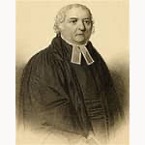
By the mid-1840’s Ngāti Whātua of the southern Kaipara had met the challenges of initial European contact and had adapted their occupation and use of the land to enable them to take advantage of the new situation. The tribal structure and mana of Ngāti Whātua was intact, as were their vast landholdings, and they were ready to invite the Pākehā to settle among them on their own terms.
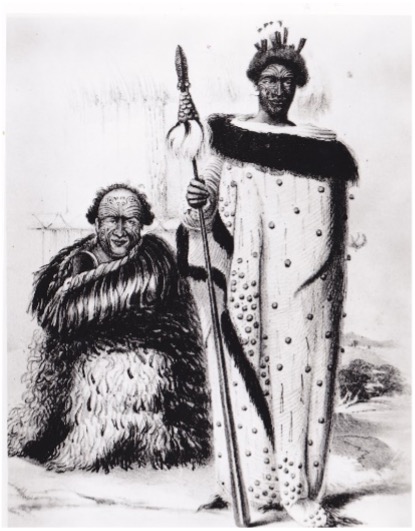
Apihai Te Kawau (seated) – courtesy of Helensville Museum
In 1862 a family, who was to have an immense impact in the southern Kaipara, arrived in Aotearoa (New Zealand). Isaac and Janet McLeod and brother John, and Helen McLeod landed in Tamaki Makaurau (Auckland) from Nova Scotia where they had been farmers and timber workers. John McLeod had visited the Kaipara area in the early 1850’s and had been welcomed by Te Otene Kikokiko who “was most pressing in his invitation to come and settle in Te Awaroa.”[1] As a result milling machinery was transported from Tamaki Makaurau (Auckland) by ship via North Cape to the Kaipara and the mill was established opposite the Te Awaroa Māori kāinga (village). John McLeod purchased the Otamateanui block and Isaac purchased the Te Pua ā Mauku block.

John & Helen McLeod – courtesy of Helensville Museum
The McLeod mill, reputed to be the first on the Kaipara, was situated roughly where the Grand Hotel now stands. The mill only operated for a few years and closed when there was a slump in the timber market. After only five years, John McLeod had built a village, renamed Te Awaroa as Helensville after his wife, and then sold his property Otamatea to the firm of Brown and Campbell. Ever the restless entrepreneur, businessman, and politician, he moved back to Tamaki Makaurau (Auckland), and later moved on to Rhode Island, America, leaving his wife and children behind.
Although John is credited with founding the town, it was Isaac and Janet who stayed on and were the true Helensville pioneers. They were involved in many farming and business activities and became the backbone of commercial Te Awaroa, Helensville. Isaac was described as a dour man, but straightforward and Godfearing. He had a fund of good common sense and was noted for his strict sense of justice and fair play. It was said that Janet’s gentle manners acted as a check for her somewhat dour spouse.
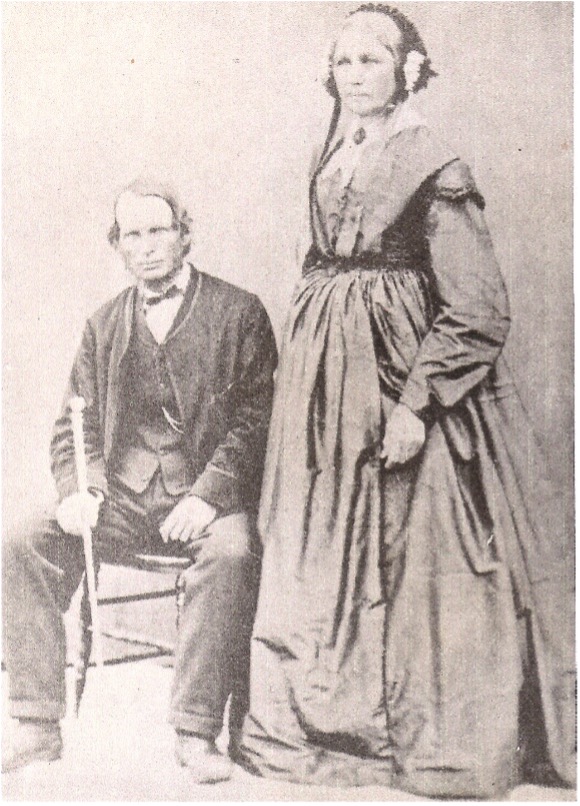
Isaac & Janet McLeod – courtesy of Helensville Museum
Read More from Papers Past:
People & Their Stories…
Polly Williams
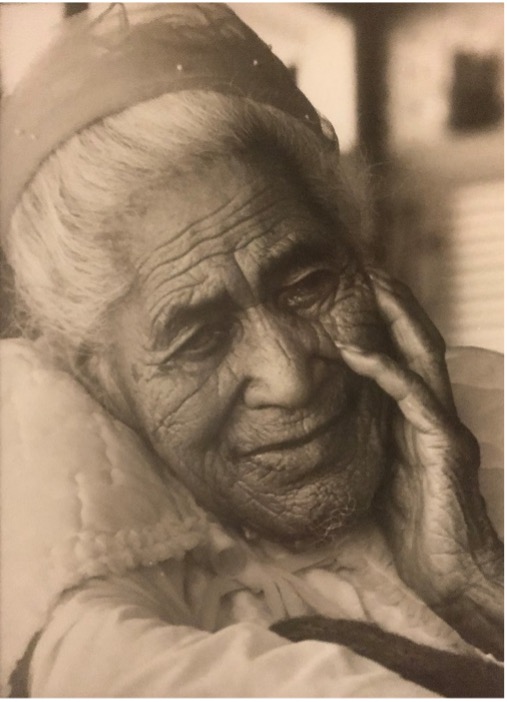
Te Awaroa’s (Helensville’s) longest living resident was Mrs Rawinia Taitimu (Polly Williams), who died 3 June 1970 and was reputed to be 122 years old. She was buried at Orakei.
Rawinia was born at Te Kohanga, Port Waikato, and had Ngāti Tipa, Ngāti Mahanga, and Ngāti Whātua tribal connections. Her maiden name was Heta Maata and Polly Williams was the name given to her by Pākehā settlers. Her first memory was of her childhood at Port Waikato. It was the sight of “a long, carved waka, manned by at least 50 warriors cutting through the blue waters”. Her family moved to Te Awaroa when she was a child.
 When the weary party of McLeod women and children followed the last turns of the track from Pitoitoi (Riverhead) into the new milling township of Te Awaroa in 1863 they were no doubt watched by the curious eyes of Māori spectators. Among the watchers was the girl Heta Maata (then aged about 15). She recalled being particularly attracted to the two-year-old ‘Anaru’ (Andrew), the youngest child of Isaac and Janet McLeod. Heta’s father was among those who found work at the mill set up by the McLeod brothers.
When the weary party of McLeod women and children followed the last turns of the track from Pitoitoi (Riverhead) into the new milling township of Te Awaroa in 1863 they were no doubt watched by the curious eyes of Māori spectators. Among the watchers was the girl Heta Maata (then aged about 15). She recalled being particularly attracted to the two-year-old ‘Anaru’ (Andrew), the youngest child of Isaac and Janet McLeod. Heta’s father was among those who found work at the mill set up by the McLeod brothers.
The young Heta admired the character and endurance of these Pākehā settlers. The women taught her to do the washing, English style, and to use a mangle. They taught her to tell the time, to count money and to bake a seed cake in a camp oven.
Heta’s married name was Rawinia Taitimu. Her husband was a Māori policeman. Although she had no children of her own, she fostered two children. Rawinia had family ties with Haranui and lived and worked in the area. She was known as a hard worker milking cows, chopping wood, and planting kumara. After her husband died, she worked as a rabbiter around the Parkhurst area. She was a well-known figure with her white dogs as companions.
Rawinia moved to Orakei in 1940 and lived a sheltered life there, watched over by her foster daughter and family. She would reminisce of her early life in Te Awaroa, of the steamers to Dargaville, of the good Mrs Bradly who taught her to do “good clean washing” and of the Pākehā pioneers whom she admired so much – she outlived them all.
